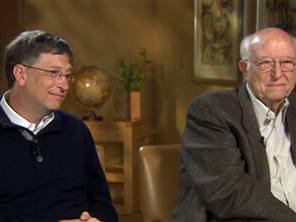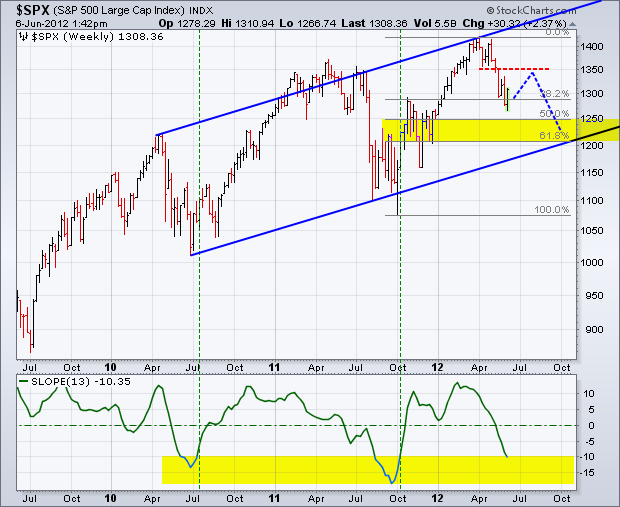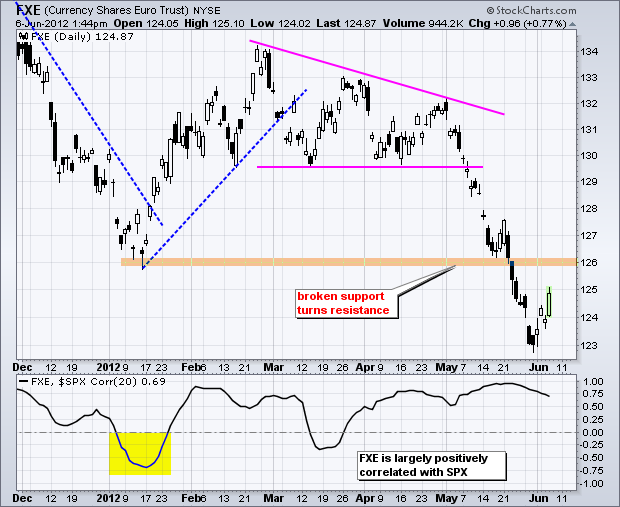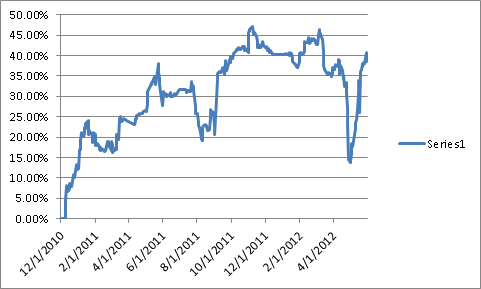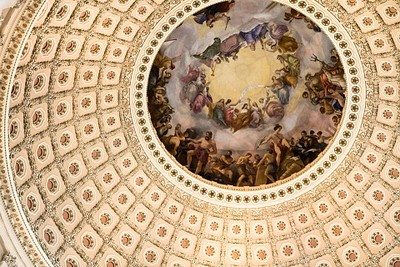
I had a chat with Bill Gates, Sr. last night, co-chairman of the Bill and Melinda Gates Foundation, the world?s largest private philanthropic organization. There, a staff of 800 help him manage $30 billion.
The foundation will give away $3.1 billion this year, a 10% increase over last year. Some $1.5 billion will go to emerging nation health care, and another $750 million to enhance American education. The foundation?s spending in Africa has been so massive, that it is starting to have a major impact on conditions, and is part of the bull case for investing there (please click here).
The fund happens to be one of the best managed institutions out there, having sold the bulk of its Microsoft (MSFT) stock just before the dotcom bust and moving the money into Treasuries. Mr. Gates? pet peeve is the precarious state of the US K-12 public education system, where teaching is not as good as it could be, expectations are low, and financial incentives and national standards are needed.
When asked about retirement, he says ?having a son with a billion dollars puts a whole new spin on things.?? Now a razor sharp 87, his favorite treat is the free Net Jet miles he gets from his son Bill every year. In his memoir Showing up for Life, he says a major influence was his Scoutmaster of 70 years ago. Being an Eagle Scout myself, I quickly drilled him on some complex knots, and he whipped right through all of them. The world needs more Bill Gates Srs.
After my regular dump on residential real estate, I feel obliged to reveal one corner of this beleaguered market that might actually make sense.
By 2050 the population of California will soar from 37 million to 50 million, and that of the US from 300 million to 400 million, according to data released by the US Census Bureau and the CIA fact Book (check out the population pyramid below).
That means enormous demand for the low end of the housing market?apartments in multi-family dwellings. Many of our new citizens will be cash short immigrants. They will be joined by generational demand for limited rental housing by 65 million Gen Xer?s and 85 million Millennials enduring a lower standard of living than their parents and grandparents. These people aren?t going to be living in cardboard boxes under freeway overpasses. Or maybe they will.
The trend towards apartments also fits neatly with the downsizing needs of 80 million retiring Baby Boomers. As they age, boomers are moving from an average home size of 2,500 sq. ft. down to 1,000 sq. ft. condos and eventually 100 sq. ft. rooms in assisted living facilities. The cumulative shrinkage in demand for housing amounts to about 4 billion sq. ft. a year, the equivalent of a city the size of San Francisco.
Fannie and Freddie financing is still abundantly available at the lowest interest rates on record. Institutions combing the landscape for low volatility cash flows and limited risk are starting to pour money in.
Got Anything With 3 Beds & 2 Baths and a Hot Tub?
I am constantly barraged with emails from gold bugs who passionately argue that their beloved metal is trading at a tiny fraction of its true value, and that the barbaric relic is really worth $5,000, $10,000, or even $50,000 an ounce (GLD). They claim the move in the yellow metal we saw in recent years is only the beginning of a 30 fold rise in prices similar to what occurred from 1972 to 1979, when it leapt from $32 to $950.
So when the chart below popped up in my in-box showing the gold backing of the US monetary base, I felt obligated to pass it on to you to illustrate one of the intellectual arguments these people are using. To match the 1936 monetary value peak, when the base was collapsing, and the double top in 1979 when gold futures first tickled $950, this precious metal has to increase in value by eight times, or to $9,600 an ounce.
I am long term bullish on gold, other precious metals, and virtually all commodities for that matter. But I am not that bullish. It makes my own three year $2,300 prediction positively wimp-like by comparison. The seven year spike up in prices we saw in the seventies, which found me in a very long line in Johannesburg, South Africa to unload my own krugerands in 1979, was triggered by a number of one off events that will never be repeated.
Some 40 years of pent up demand was unleashed when Richard Nixon took the US off the gold standard and decriminalized private ownership in 1972. Inflation then peaked around 20%. Newly enriched sellers of oil had a strong historical affinity with gold. South Africa, the world?s largest gold producer, was then a boycotted international pariah and teetering on the edge of disaster. We are nowhere near the same geopolitical neighborhood today, and hence my more subdued forecast. But then again, I could be wrong.
You may have noticed that I have not been doing much trading in gold or the other precious metals lately. That is because they are still working off an extremely overbought condition. Given some time, and a nice little dip in prices, and I?ll be back there in a heartbeat. You?ll be the first to know when that happens.
All eyes will be focused on Federal Reserve Chairman, Ben Bernanke, on Thursday looking for any hints that further quantitative easing is on the way. Don?t get your hopes up. I don?t expect the esteemed former Princeton professor to conveniently tip his hand. At the most he might make a reference to ?keeping all options open,? and that is it.
The Fed?s Beige Book was released today and doesn?t by any means justify bolder action. This is the report that Ben will have in hand when he treks up to Capitol Hill for his congressional testimony.
According to the report, the economy is expanding at a moderate pace. Manufacturing, loan demand, capital spending, consumer spending are all up modestly. New York rents are rising. Auto sales are strong. Construction is up in both the residential and commercial sectors. Price inflation and wage pressures remain modest. It is all consistent with the lukewarm, flaccid 2% GDP growth that I have been arguing for all year. There isn?t a QE3 anywhere in this.
You can therefore expect market to be disappointed once again. Whether the selloff resumes mid-way through Ben?s statement, when it is over, or sometime next week, is anyone?s guess. Keep in mind that everyone and his brother is looking to sell this rally. So you will need the fastest mouse finger in the West to unload at the top. It is wiser still to start scaling in at this level here, with the S&P 500 at 1,318.
If Europe can just shut up for a few more days and quit acting like a chicken with its head cut off, then we might make it up to the 1,336 high that we saw last week. That would be an opportunity to double up your short and sell out of the money calls. If the Greek election on June 20 goes the right way, then we could make it all the way up to 1,350. That would be a textbook retracement of half of the move down that started on April 2. However, I doubt we?ll make it that high.
Take a look at the chart below and you?ll see that in recent years corrections have been a two-legged affair. First you see a dramatic selloff, then a dead cat bounce worth 50% of the move down, then a new marginal low. This logic also points to a final bottom at 1,250 or 1,200.
I am able to add shorts here because I covered the ones I had within one point of the 1,268 bottom on Monday. This enabled me to clock a three day, 45% gain in my short position on the S&P 500 (SPY). It gives me the dry powder I need to reload up here. That is provided I have the fastest mouse finger in the West, which my close friends assure me I do.
Global Trading Dispatch, my highly innovative and successful trade mentoring program, earned a net return for readers of 40.17% in 2011, putting it among the top hedge fund managers. The average annualized return since inception is 26%. The service includes my Trade Alert Service, daily newsletter, real time trading portfolio, an enormous trading idea database, and live biweekly strategy webinars. To subscribe, please go to my website at www.madhedgefundtrader.com , find the Global Trading Dispatch box on the right, and click on the lime green ?SUBSCRIBE NOW? button.
Fastest in the West?
I heard a fascinating story from my friends at the US Treasury the other day. Even though unemployment is high, personal tax refunds were plummeting and tax revenues were soaring. What was even more puzzling was that the states with the worst unemployment rates, like California, Nevada, and Florida were seeing the heftiest increases. Weren?t elevated jobless rates supposed to generate less taxable income, not more?
The intrepid sleuths on Pennsylvania Avenue put some financial detectives on the case to solve the mystery. It turns out that with home ownership rates falling, real estate prices doing a swan dive, and interest rates at 200 year lows, taxpayers are losing their largest deductions, causing the tax bills to rocket. During the 2011 tax year deductions fell by some 20%, an enormous move given that there were no serious tax reforms enacted.
It turns out that this has been going on for some years, thanks to the unremitting bull market in bonds. According to IRS data, the home mortgage deduction, which can be worth up to $26,000 per household, fell by 14% from 2007 to 2009. The total number of returns claiming this deduction dropped by 5 million during these years.
Preliminary data show that this write off dropped by another 7.2% in 2010 alone. The windfall could bring in as much as $26 billion in additional federal revenues in 2012. It not just a payday for Washington. The 42 states with income taxes are seeing similar revenue rises, with California by far the biggest beneficiary, where the number of filers claiming a home mortgage deduction declined by 9% in 2011.
What?s more, the gravy train for government green eye shades could speed up from here. If the Federal Reserve modifies and extends its ?twist? policy of monetary easing through the purchase of mortgage securities, interest rates could crater as much as 25% from here. Tax bills would soar accordingly. Budget constrained governments across the country couldn?t be happier.
The home mortgage deduction has been a sacred cow of American politics since it was first initiated in 1913. Whoever though it would self-destruct?
Yes, That is Definitely a Smaller Deduction
The Mad hedge Fund Trader?s Trade Alert Service posted a 20.5% gain in May, the best monthly performance since its 2010 inception. The 28 trade alerts I sent out during the month also set a new record. That takes the average annualized return up to 22.8%. During the same period, the S&P 500 gained a paltry 10%. This was in a month rated one of the third or fourth most difficult in hedge fund history.
Calling the April 2 top in equities markets within a week was certainly a big help.
My hefty short position in the Russell 2000 small cap index (IWM) was my biggest winner, adding 10.34% to the model portfolio?s 2012 return. The Euro (FXE) was another home run, with my shorts there contributing an additional 9.29%. Short positions in gold (GLD), Pulte Homes (PHM), and Boeing (BA) also helped. On the long side, positions in Apple, Hewlett Packard, and the yen were winners.
Global Trading Dispatch, my highly innovative and successful trade mentoring program, earned a net return for readers of 40.17% in 2011. The service includes my Trade Alert Service, daily newsletter, real time trading portfolio, an enormous trading idea database, and live biweekly strategy webinars. To subscribe, please go to my website at www.madhedgefundtrader.com , find the Global Trading Dispatch box on the right, and click on the lime green ?SUBSCRIBE NOW? button.
?Trade Alert Service Performance Since Inception
Walking through the Capital dome on my way to the House the Representatives, I couldn?t help but sense the presence of ghosts of friends from decades past. There was Tip O?Neill with his ever-present scowl. Ted Kennedy was hurrying off to another meeting, barking orders in his peculiar Boston accent. Mike Mansfield was maintaining his ever aloof and professorial demeanor.
President Ronald Reagan was giving a hearty laugh after retelling the same off color joke for the umpteenth time, turning the faces of the female press crimson. I found the spot where 30 years ago, I ambushed Treasury Secretary Nicholas Brady and got a heads up on the impending bailout of Latin America, financed by, what else, Brady bonds.
I stood briefly to admire the timeless paintings in the filtered light, Washington Crossing the Delaware, the Victory at Saratoga, and the Surrender at Yorktown. My ancestors were present at all three. Then I hurried over to the House chamber, up the wide marble steps, and into the office of the Minority Speaker of the House, Nancy Pelosi.
The Madame Speaker welcomed me into her spacious, high ceilinged office and then immediately reached for my lapel. She touched my Marine Corps pin and said ?Thank you for your service.? I replied that it was a very long time ago and that many more had made far greater sacrifices since. She then launched into a description of her recent trip to Afghanistan where she described to the troops in Kandahar the opportunities and benefits that awaited them on their return.
To open on a light note, I asked her how it felt to be the most powerful woman in history after Cleopatra and Catherine the Great. She replied ?Having the levers of power at hand does have its uses.?
Agree with Nancy and she can be ingratiating and even motherly, taking the opportunity to pour me a cup of tea and offering a cherry Danish. Argue with her and she turns into a pit bull, whipping out well-rehearsed arguments and data so fast it almost knocked me back on my heels.
Pelosi is one of the most liberal Reprentatives in congress. Her multi ethnic constituents in the 8th California congressional district in San Francisco repeatedly return her to office with a resounding landslide. Most locals don?t even know who ran against her. In fact, many of her supporters bitterly complain that she is not liberal enough and compromises too often.
The nation?s greatest concentration of wealth creation is also an easy commute from her San Francisco office, and Nancy is well attuned to technology issues. Apple (AAPL), Google (GOOG), Hewlett Packard (HPQ), Oracle (ORCL), and Facebook (FB), have together created $1 trillion in market capitalization over the last decade.
If the Democrats retake the House in November she will reclaim her former job as House Majority Leader, making her third inline to succeed the president. If not, she will remain a major source of input to the president on economic policy. So I thought it judicious to listen what she had to say. Thin skinned, died in the wool conservatives might want to skip the rest of this story.
As the Supreme Court?s decision on Obama?s health care plan was imminent, I asked for her analysis of the likely outcome. She insisted that basic health care was a right and not a privilege. The Affordable Health Care Act will be a crucial tool to get health care spending under control and cut significantly into the budget deficit.
For business, it is a competitiveness issue, with backbreaking health insurance costs cutting into profitability and leaving managers reluctant to add employees. Foreign competitors bear no such overheads, the cost borne by generous national health programs. Employees here are ?job locked? by the old system, which prevents them from moving or changing careers for fear of losing company health insurance.
Every developed economy that implemented national health care has been able to keep spending to 8% of GDP compared to the 13% now suffered by the US, on its way to 18%. As the most efficient economy in the world, there is no reason why America cannot match these results. The program should also create 4 million jobs extending care to 50 million people.
Pelosi says the constitutionality of Obamacare is ?iron clad? and expects the Supreme Court to rule in its favor by a 6-3 margin. The right of congress to regulate interstate trade is clearly enshrined in the 1803 Marbury versus Madison case. While an activist conservative court may chip away at the act, such as through barring the individual mandate, severability prevents them from throwing out the entire measure.
While full implementation does not begin until 2014, 80 million have already benefited. They include children under 26 added to parents? policies, coverage for consumers with pre-existing conditions, and shrinking the drug benefit ?doughnut? for seniors. Young children who get cancer are no longer treated as having a pre-existing conditions for life. However, Nancy concedes that the administration has lost the public relations battle over the issue.
The Democrats need to win 25 seats in the November election to retake the House. She thinks there is a 50:50 chance of that happening. Even if they fail to regain the majority, the Tea Party?s influence will be greatly diminished, making compromise and deal making much more likely. That could lead to a resuscitation of the ?Grand Bargain? that was nearly reached last summer. This would be a hugely market positive development.
She urged Republicans to ?take their party back from the radicals? who don?t believe in any public role for the government beyond defense. The sole accomplishment of the Tea Party has been to hand control of the Senate to the Democrats by running weak, ideologically rigid candidates in the primaries, most notably in Delaware, Nevada, and now Indiana.
Nancy admitted that when growing up, a career in politics was the last thing on her mind. She was the progeny of the premier Italian political dynasty in Baltimore. Her father was both mayor of Baltimore and a member of congress. Her brother was also a mayor. After spending a childhood handing out campaign leaflets, her rebellious nature prompted her to run a mile from the family business.
It turns out that she ran all the way to California. With her five children nearly grown, she took a post on the San Francisco Library Committee. Then ?one thing led to another? and she ended up in her current job, which she has been working at tirelessly for 25 years.
At her first speech to congress in 1987 she boldly announced that ?I am here to fight AIDS.? A pall cast over the chamber as the members went mute. While the disease was ravaging San Francisco, it had yet to go national. Reagan denied funding for research because he believed the people who got it deserved it, overruling his own surgeon general.
It proved an important time for California to have aggressive representation in Washington. In 1989, the Loma Prieta earthquake hit, and federal funds played an important part in reconstruction. The base closures of the 1990?s cut a wide swath across the state. Almost every military facility in the San Francisco Bay area was closed, where many structures were up to 150 years old, in favor of more modern bases in San Diego and Bremerton, Washington. At one point, an aircraft carrier was used to move the 1,500 personal vehicles owned by transferring troops to save money.
I thanked Nancy for generously carving out an hour from her jam packed schedule and called it a day. As is usual with these high level political meetings, I gleaned a dozen or so valuable investment ideas. I will send out the trade alerts when I see good entry points.
The Capitol Dome
I never resist a dinner invitation from Bill Clinton?s Secretary of Labor, Robert Reich. A Rhodes Scholar who dated Hillary Clinton at Yale, he unsuccessfully ran for governor of Massachusetts against Mitt Romney, and authored 13 books. Bob is never without an original thought, nor a stranger to controversy. Today he didn?t disappoint. On top of that, he is about the funniest guy I have ever met, not far behind Groucho Marx, but well ahead of the rest of the world. A funny intellectual, imagine that.
Bob says that the US has entered a ?replacement economy? where people buy just what is absolutely necessary, and then, only when the things they own fall apart. Such economies are characterized by chronic slow growth. That is why US car sales have recovered to 14.5 million units a year, the precise number of vehicles we scrap each year, but won?t go much beyond that. Still, that is well up from the annualized 9 million units we saw at the 2009 low.
Consumers and corporations are so reluctant to spend because the scars of the 2008 crash are fresh. That year saw the most dramatic collapse in consumption in 80 years. Normally, the economy rebounds strongly after such sharp draw downs. Not this time. Bob describes the current lethargic 2% growth rate as ?disturbing.?
The real problem is that so few consumers are now participating in the economy. Of course, the 14.5% of the broader U-6 don?t spend beyond bare essentials. But much of the working middle class has also seen their purchasing power pared to the bone, thanks to 30 years of wage cuts and cost of living increases. Real purchasing power has dropped by half and explains a GDP growth rate that is little more than half of the long term trend growth rate of 3%. Without a middle class, you don?t have a United States. Needless to say, this does not bode well for equity prices, as low growth only justifies low multiples.
If you raise growth to 4%, then all of the country?s deficits go away by themselves over time. A major government investment in the country?s rotting infrastructure would accomplish this. Good luck getting that through a gridlocked congress.
Franklin Delano Roosevelt?s great accomplishment was to provide the means for more people to join the economy, creating an unprecedented 40 year boom. While many blame high taxes for our current problems, America?s golden age of the 1950?s, during the Eisenhower administration, took place with a maximum tax rate of 91%. Growth then was double what it is now.
Last fall, when Obama was trailing badly in the polls, he briefly considered bringing on Hillary Clinton as a running mate to shore up the ticket. He has since pulled into the lead, thanks to a bruising Republican primary and a series of strategic missteps by the GOP, and that plan has been put on a back burner. Hillary isn?t interested anyway because she can?t stand working for Obama.
Not only have the Republicans offended every minority, including Hispanics, women, and the young, they are on the wrong side of the country?s broad demographic trends. They are just not making white conservatives anymore as fast as they used to, except in Utah.
Obama has wisely made ?fairness? the hallmark issue of the current campaign. Since 1990, the top 1%?s share of national earnings has soared from 23.5% to 40%. The last time it was that high was in 1928. CEO earnings have grown especially fast, rising at 400 times the rate of blue collar workers over the last three decades. The concentration of wealth at the top stagnates the economy by redirecting savings into Treasury and municipal bonds, away from job creating direct investment. This is why ten year Treasury bond yields are a subterranean 1.55%, despite massive monetary growth.
The generation of the ?Occupy? movement has suffered the most from the lack of new job creation. In days past, many of these kids would have gone into domestic manufacturing or other union jobs, which no longer exist. Entry level jobs are now scarce, as are the career ladders that follow, as cost cutting companies no longer invest in training the young. ?Occupy? has focused a great spotlight on the issue, which the wealthy and the right would much rather avoid, and helps to define the national debate.
Money in politics is a huge problem. He is glad he lost the Massachusetts election because if successful, he would have had to have spent 70% of his time fund raising, as do most politicians today. Democracy only works when people get involved in large numbers. Otherwise, they get overwhelmed by big money.
I took two of Bob?s economics classes at the University of California at Berkeley, and know too well his wry humor, acid wit, and preference for backing up arguments with mountains of empirical data. Entering students are obliged to buy 400 pages of photocopied charts, tables, and other raw data about the labor market, which they are expected to commit to memory by the end of the semester. These are not basket weaving classes by any means.
Bob warned me not to take his investment advice, as he bought his home in north Berkeley at the 2006 market top, just before it dropped in value by half. On top of that, he has had to eat two 10% cuts in his Berkeley professor?s salary forced on him by drastic state budget cutbacks. UC Berkeley is the crown jewel of public education. However, the state has little choice but to starve it to death. This is not good for the long term future of the Golden State, which has to create the educated class to earn the wealth to pay the taxes.
Every time I walk away from one of Bob?s dinners I find my mind churning from his out of the box thinking and alternative viewpoints. I?ll let you know the next time I make the invitation list.
The news out this morning that Apple (AAPL) may launch its HD television product in time for the Christmas holidays caused a nice pop in the stock this morning, so I thought I would quickly review the fundamental case behind owning the company. The story originated from rumors in China that its main manufacturer, Foxcon, had already placed orders for key component parts. It will be another web to lure consumers into the Apple ecosystem and then trap them there for life. It also makes my 25% core long position in an August deep in the money call spread look pretty good.
Apple earnings have grown at a rate of 76% a year for the last seven years, and there is no sign that ballistic growth rate will abate anytime soon. The iPhone 5 launch in September will be an absolute blowout and the firm?s biggest new product launch ever. Even I have lined up a buyer of my almost new iPhone 4s at a big discount so I can get the vastly more powerful upgrade.
There are longer term strategic considerations too, such as the fact that Apple has only scratched the surface in China, the world?s largest cell phone market. A China Mobile (CHL) deal looming which will give Apple access to 600 million potential new subscribers. After refusing to support Apple products for decades, corporations are now adding Apple products in large numbers, urged on by the convenient and imminent demise of (RIMM)?s Blackberry.
The real icing on the cake here is that Apple is still one of the cheapest stocks in the market. Back out the $120 billion in cash it will soon have on its balance sheet, and you have in your hands a hyper growth company that is selling at an earnings multiple of only 8X. Look at a full year earnings target of $110 a share and rerate it up to a 10X multiple and you get a 12 month price target of $1,100.
There are some outliers that could pee on Apple?s parade. If the Android operating system somehow takes off that could slow growth. You also have to wonder how much of this amazing story is already baked into the price and when will the law of large numbers kicks in for this $532 billion company.
Paid up subscribers to Global Trading Dispatch and the Diary of a Mad Hedge Fund Trader newsletter are entitled to a password that gives them access to my premium content. Without it you will be unable to access the best parts of the new website, including my daily real time trading portfolio, trade alert tutorial and user?s manual, my Review of 2011, 2012 Outlook, and live biweekly strategy webinars. If you still have not received your password, or have lost it, please email us at support@madhedgefundtrader.com . A new password will be issued promptly.
For those who are yet to have their investment returns enhanced beyond their wildest imagination by Global Trading Dispatch, please sign up for the newsletter only for $500 a quarter. If you like what you see, then you can upgrade later to the full service for $3,000 a year and we will give you a credit for what you already spent.
Global Trading Dispatch, my highly innovative and successful trade mentoring program, earned a net return for readers of 40.17% in 2011, and has an annualized 25% return since inception. The service includes my Trade Alert Service, daily newsletter, real time trading portfolio, an enormous trading idea database, and live biweekly strategy webinars. The goal is to level the playing field for you and Wall Street. To subscribe, please go to my website at www.madhedgefundtrader.com , find the Global Trading Dispatch box on the right, and click on the lime green ?SUBSCRIBE NOW? button.

